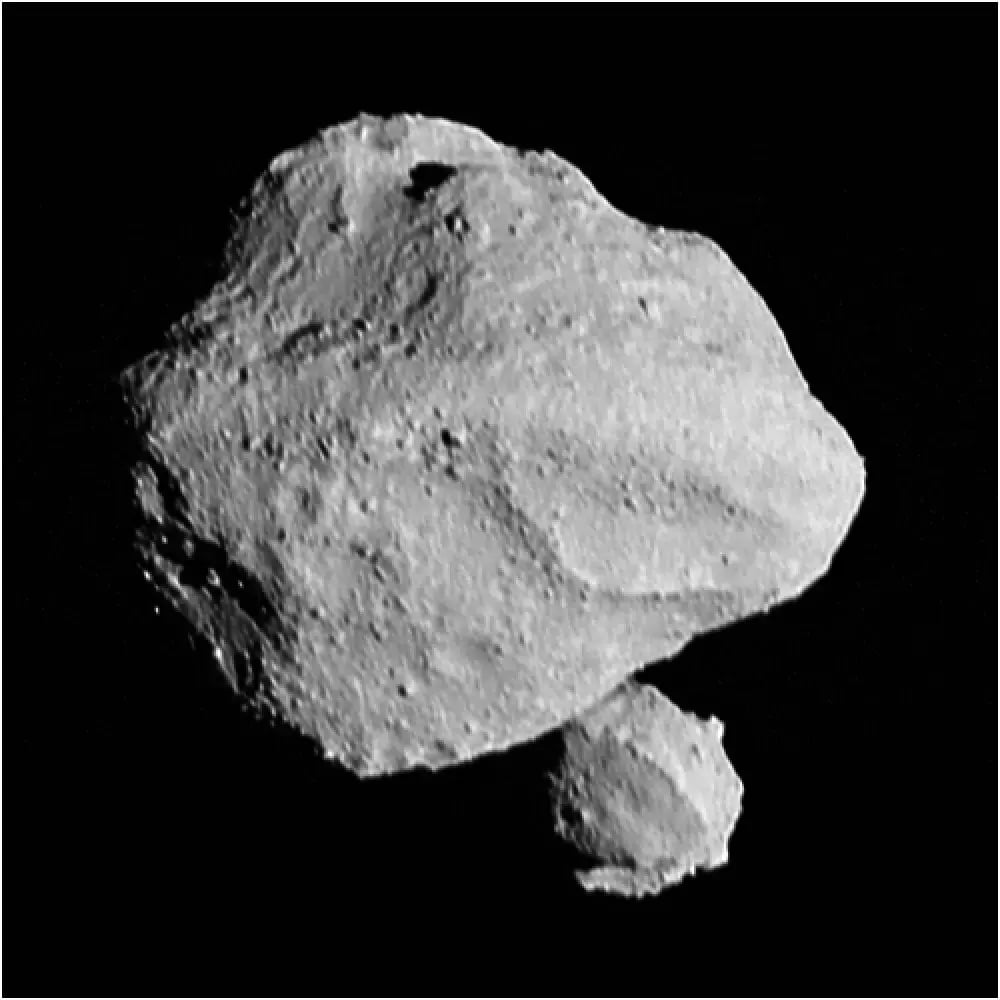Getting your Trinity Audio player ready...
A new analysis published in Nature reveals the movement mechanisms of "Dinky" and "Selam", an asteroid with a moon pair—two smaller rocks rotating synchronously around it.
NASA's Lucy spacecraft captured images of the asteroid Dinkinesh ("Dinky") during its November 2023 flyby, revealing that it is orbited by a satellite asteroid named Selam, a rare contact binary system consisting of two similarly-sized lobes measuring 230 and 250 yards across.
About 15% of small near-Earth asteroids have a single satellite orbiting them, making Selam's binary nature even rarer.
The binary moon system orbits Dinkinesh every 52.7 hours at a distance of 3.1 km, and is an unexpected discovery as such complex systems are not commonly found in small celestial bodies.
The discovery of Selam challenged existing theories about asteroid formation. It offered new insights into the structure and history of celestial bodies, as the similarity in size of the lobes raises questions about the satellite's formation process.
Observations from the Lucy mission revealed unique features of Dinkinesh, including an equatorial ridge and a massive structural shift, suggesting it may have lost material due to changes in rotation speed and orientation, with Selam possibly forming from the ejected material.
Asteroids with diameters less than about 5 km, like Dinkinesh (719 m), are affected by radiative torques such as the YORP effect, which significantly influence their evolution, including the formation of Selam from material shed by Dinkinesh due to YORP-induced spin-up and subsequent reaccretion.
Dinkinesh shares features with other near-Earth asteroids like Bennu, Ryugu, and Didymos, and comparative studies with other celestial bodies can shed light on asteroid systems.
The Lucy spacecraft, primarily intended to study Jupiter's Trojan asteroids, added Dinkinesh to its itinerary as a test and will use Earth's gravity to reach the Trojans by 2027.
This article was written in collaboration with Generative AI news company Alchemiq
Sources: NASA, Nature, ScienceDaily, Olhar Digital, Veja, Yahoo Finanzas, WIONews, DevDiscourse, Science Net, SpaceDaily, China News, News9Live, NewsNosh, Union Radio, LiveScience, PopSci


